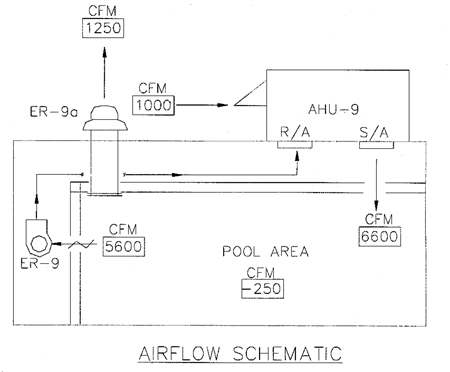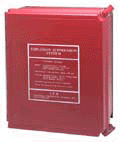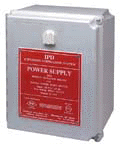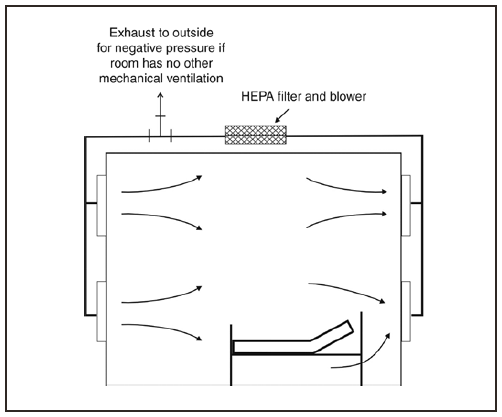INDUSTRIAL: Specialists in New Design, T.I.E.R. Audits, Optimization of Existing Equiment
New and Existing Design Offerings:
-
Requirements Gathering
-
Capacity Planning
-
Conceptual Design
-
Plans & Specifications
-
We will meet Code Requirements and Industry Standards/Best Practices
-
Budget Planning
-
Equipment Specifications (See Details Below)
-
Turnkey Installation
We are not equipment manufacturers nor are we exclusive to any one brand.
This benefits our clients by being able to offer the best brand of equipment for
the application, unlike manufacturers, who attempt to make their equipment "fit" your application. See more about our service offerings below.
Optimize with a Technical Industrial Evaluation Report (TIER)
We perform TIER Audits. The TIER Audit is an evaluation of existing HVAC, dust collection, ventilation and process equipment in a facility. The goal is to document the existing conditions, compare these to original design conditions, and to determine what, if any, changes are needed in order to maximize system performance, bring the system up to compliance, improve filtration efficiency, lower maintenance costs, and extend equipment life.
A TIER Audit helps our customers maximize budget spend for best performance results.
_____________________________________________________________________________________________________________________________________________________________
INDUSTRIAL: Areas of Specialty
_____________________________________________________________________________________________________________________________________________________________






More information about our areas of specialty:
Dust, Mist and Fume Systems
A TIER Audit can help determine required dust collector capacity. We analyze the air-to-cloth ratio to determine the operating limits of your existing dust collector against industry standards.
Custom Hoods
We design hoods for labs and businesses.
Hoods and Recommended Volumes
The hooding design at pickup points should provide ventilation of the dust source, while minimizing the amount of product introduced into the dust collection system. Improperly designed hoods tend to increase the grain loading beyond what the collector was originally designed to handle. The Industrial Ventilation Guide recommends standard design practices for hood design and volumetric requirements for transfer points. Based on these practices, specific minimum and maximum volumes are calculated and compared to required volumes. A TIER Audit recommendation is then made regarding the system's potential to perform as installed


Actual Installation for an A.S.B. Client

Overall Plant Air Balance
Various pieces of equipment located at a facility all work with one another. If one piece is not functioning, the entire plant air balance can be incorrect. This often leads to negative pressure within a building that has negative impacts on the temperature, humidity and airborne dust levels. A.S.B can handle any difficult air balance job.
Central Vacuum
For this area, we considerequipment & blower specification and piping design into our plans and specifications.
We offer AutoCad drawings with equipment & material list for end-user installation.
-
WELDING FUME EXTRACTION
Welding fume can contain a lot of hazardous substances. The most efficient way to a healthy working environment is to extract them at the source, before they reach the operator.
-
GRINDING/SANDING/CUTTING DUST EXTRACTIONS
Grinding dust can be very difficult to capture with traditional methods. With high vacuum it’s easy, you capture the dust right where it arises, before it can cause any problems for the user or his colleagues.
-
CLEANING
Traditional methods for cleaningy cause swirling clouds of dust.
By using high vacuum you take care of the unwanted material once and for all.
-
METAL CHIPS EXTRACTION
With high vacuum dust and fluids are removed safely. You avoid eye-injuries and oil mists, reduce the need for maintenance and prevent unnecessary production stops.
HVAC/Ventilation
We design and implement turn key HVAC systems.
We also optimize and modify existing systems. As your ventilation system changes to accommodate increased production, ventilation needs, or process changes, changes in airflow are often times required. If your system has not changed, but airflows are not at design performance levels, having a TIER Audit performed will help to determine why this is happening and what corrective measures can be taken to achieve the
design performance.


Explosion Protection
Explosion suppression is particularly suited for use in process enclosures where dust suspended in air represents an explosion hazard. Such processes include Dust Collectors, Dryers, Blenders, Dryers, and Silos.
ASB's approach provides you with the protection options you need, based upon your specific process requirements, and your protection objectives. As a leader in the industry, we are continuously researching and pursuing the leading technologies in protection strategies to meet our customer’s needs.
Explosion suppression systems deliver extinguishing agents into rapidly developing fires to suppress them before they reach destructive proportions. A typical system consists of a unitized sensor, a power supply module, a system monitor and several "cannons."
The cannon propels the extinguishing agent into the the developing fireball of an explosion. Because the developing explosion has a head start on the actuation of the suppression system, the system must be explosively actuated. This breaks up any compaction of dry chemical agents or vaporizes liquid extinguishing agents, and releases stored pressure to deliver the agent at a very rapid rate. The function of the agent is to extract heat from the developing fireball. Because of the amount of heat is a function of the size of the fireball, and because the size grows rapidly with time, the suppression system must react very quickly.
Process pressure is monitored by a unitized sensor module that contains three individual sensors and the electronic logic to trigger the cannons. If two of the three sensors indicate that a sufficient pressure rise of an explosive nature has occurred, the logic circuit actuates the cannons. The individual sensors are programmed to actuate the system based on a pre-determined rate of pressure rise typical of an explosion, as opposed to gradual process pressure increases.
The system monitor provides intrinsically safe power to the sensors and cannons. It also interprets signals from the sensor and indicates system status through dedicated LEDs. For additional signaling and monitoring purposes, the system monitor has relays for remote signaling and system lock-out.
A power supply module supplies 24 vdc to the system with either 120 or 220/240 vac line voltage input. Batteries within the power supply module are maintained on continuous charge and provide power to the system if inverter power is lost.
Because intrinsically safe levels of current are used to power the cannons and sensor, ordinary conduit can be used to run wiring, thus eliminating the need for expensive, explosion-proof hardware and installation costs.
The entire system has been engineered not only for the protection of process equipment, but also to safeguard personnel who must install and maintain the safety system. System lockout features assure maintenance personnel that there will be no accidental or process triggering of the system while they carry out maintenance work. The lockout has provision for attaching a standard OSHA padlock device.
After an explosion has been successfully contained by discharge of the cannons, they can be refit on-site. Components necessary for refit can be kept on-site without the need for an explosives license for storage or handling. This capability significantly reduces the cost of ownership that may not be apparent when considering the initial cost of a suppression system.
HEPA Filtration
Fresh air is important for the health and safety of your workers. We design high quality HEPA filtration systems for single rooms or enitre buildings.
Automobile Shredding
Does your shredder have a high incidence of explosions ?
If so, you've probably figured out that is not good.
We can assist your facility in minimizing the amount of events and minimizing the impact on the surrounding community.
Our team has experience in operating shredders and engineering solutions to assist you.
We also do Scrap Metal Recycling Consulting.




Canon
Pressure Monitor
System Monitor
Power Supply


A. S. B. Engineering, P.C. 1924 Bellmore Avenue Bellmore, NY 11710 Tel: (516) 785-4200 Fax: (516) 745-9148 Email: asb@asbengineering.com
